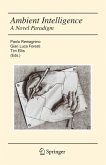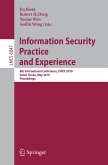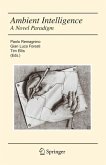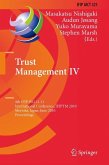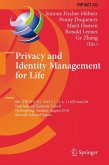Copy the following link for free access to the first chapter of this title: http://www.springerlink.com/content/j23468h304310755/fulltext.pdf
This book is a warning. It aims to warn policy-makers, industry, academia, civil society organisations, the media and the public about the threats and vulnerabilities facing our privacy, identity, trust, security and inclusion in the rapidly approaching world of ambient intelligence (AmI).
In the near future, every manufactured product - our clothes, money, appliances, the paint on our walls, the carpets on our floors, our cars, everything - will be embedded with intelligence, networks of tiny sensors and actuators, which some have termed "smart dust". The AmI world is not far off. We already have surveillance systems, biometrics, personal communicators, machine learning and more. AmI will provide personalised services - and know more about us - on a scale dwarfing anything hitherto available.
In the AmI vision, ubiquitous computing, communications and interfaces converge and adapt to the user. AmI promises greater user-friendliness in an environment capable of recognising and responding to the presence of different individuals in a seamless, unobtrusive and often invisible way. While most stakeholders paint the promise of AmI in sunny colours, there is a dark side to AmI.
This book aims to illustrate the threats and vulnerabilities by means of four "dark scenarios". The authors set out a structured methodology for analysing the four scenarios, and then identify safeguards to counter the foreseen threats and vulnerabilities. They make recommendations to policy-makers and other stakeholders about what they can do to maximise the benefits from ambient intelligence and minimise the negative consequences.
This book is a warning. It aims to warn policy-makers, industry, academia, civil society organisations, the media and the public about the threats and vulnerabilities facing our privacy, identity, trust, security and inclusion in the rapidly approaching world of ambient intelligence (AmI).
In the near future, every manufactured product - our clothes, money, appliances, the paint on our walls, the carpets on our floors, our cars, everything - will be embedded with intelligence, networks of tiny sensors and actuators, which some have termed "smart dust". The AmI world is not far off. We already have surveillance systems, biometrics, personal communicators, machine learning and more. AmI will provide personalised services - and know more about us - on a scale dwarfing anything hitherto available.
In the AmI vision, ubiquitous computing, communications and interfaces converge and adapt to the user. AmI promises greater user-friendliness in an environment capable of recognising and responding to the presence of different individuals in a seamless, unobtrusive and often invisible way. While most stakeholders paint the promise of AmI in sunny colours, there is a dark side to AmI.
This book aims to illustrate the threats and vulnerabilities by means of four "dark scenarios". The authors set out a structured methodology for analysing the four scenarios, and then identify safeguards to counter the foreseen threats and vulnerabilities. They make recommendations to policy-makers and other stakeholders about what they can do to maximise the benefits from ambient intelligence and minimise the negative consequences.
From the reviews: "The book provides an overview of the state of the art as it impacts the most important social, legal, economic, technological, and ethical implications of the technology with regard to identity, privacy, and security. ... The book succeeds in collecting many facts, concepts, insights, and ideas on many issues crucial for the future development of ambient intelligence (ubiquitous computing). Reading it will be no waste of time for anyone involved in--or just interested in--this new paradigm." (P. Navrat, ACM Computing Reviews, January, 2009) "It provides an elaborate overview on the different kinds of enabling technologies that can be considered AmI and a useful inventory of the visions of AmI as reflected in other projects (both EU sponsored, as American and Japanese projects), the different tools that can be developed in order to bring these vision into reality and the most important players worldwide. ... provide a good starting point for ethicists who would like to take up this challenge." (Neelke Doorn, Science and Engineering Ethics, Vol. 15, 2009)



